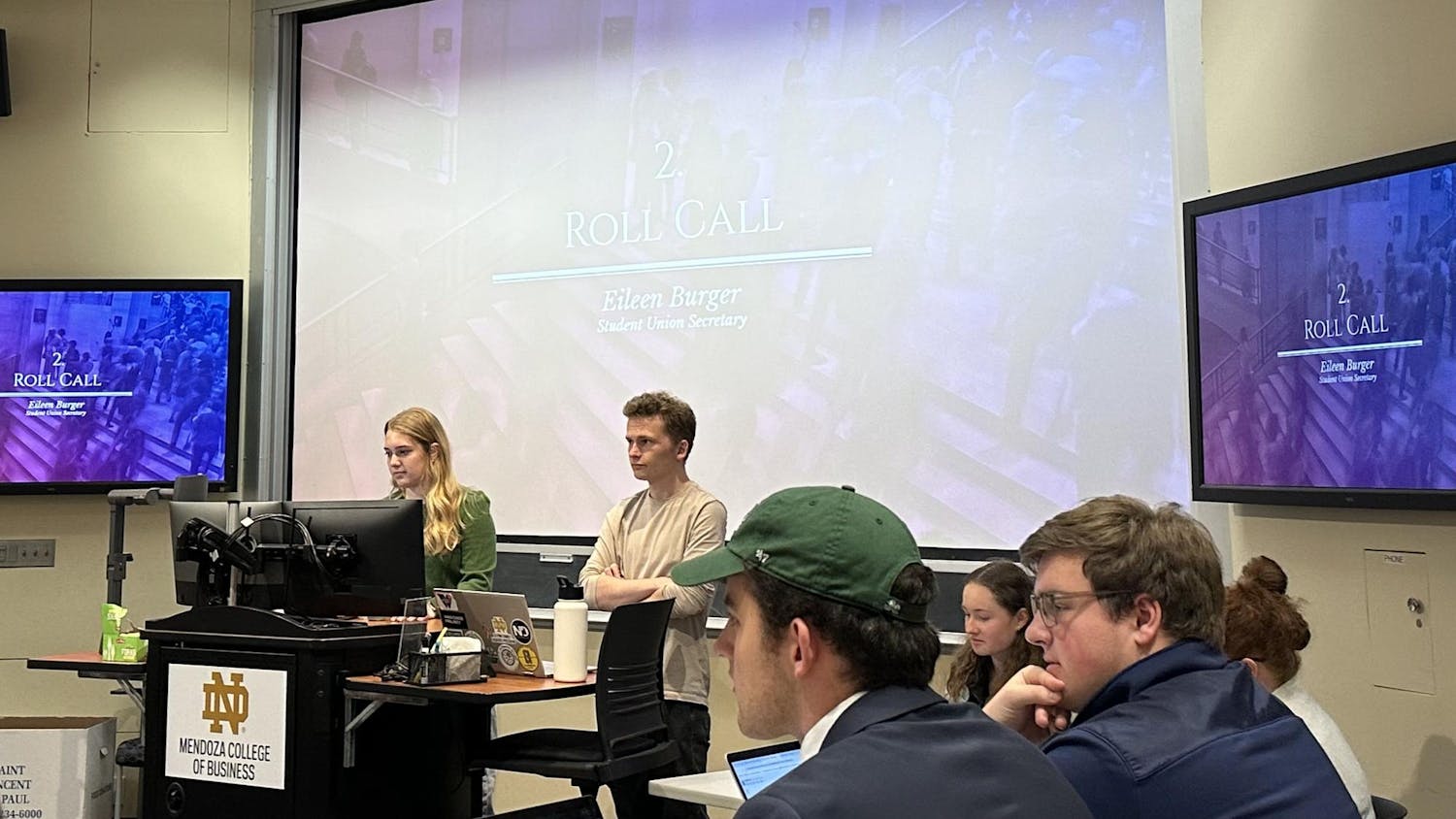World-renowned clinical psychologist Dr.David Watsonpresented a lecture Tuesday about the history of hypnosis and the common characteristics of the hypnotic state.
Watson’s lecture, sponsored by the Notre Dame Psychology Club, began with a detailed definition of what hypnosis is and what it is not.
“A lot of [hypnosis] is shrouded in mystery and controversy,” Watson said. “There are a lot of misconceptions about hypnosis.”
According to the Society for Psychological Hypnosis, hypnosis typically involves an introduction to the procedure during which the subject is told that suggestions for imaginative experiences will be presented, Watson said. Suggestion is at the core of hypnosis and is used by hypnotists to encourage and evaluate responses from subjects, he said.
“When using hypnosis, one person, the subject, is guided by another, the hypnotist, to respond to suggestions for changes in subjective experience, alterations in perception, sensation, emotion, thought, or behavior,” Watson said. “If the subject responds to hypnotic suggestions, it is generally inferred that hypnosis has been induced.”
Watson said hypnosis also involves the processes of conformity and social influence.
“It’s sort of a social interaction, a very structured situation, that is based on some sort of altered fantasy-based form of consciousness,” he said.
Watson deflated several popular myths regarding hypnosis and its effect on subjects. He said a person cannot be hypnotized against his or her will, nor can hypnosis be used to improve memory or permanently forget things or people.
“These misconceptions all have a common theme, which is that hypnosis is seen as an incredibly powerful thing,” he said. “It is powerful [but] it’s probably not incredibly powerful.”
Watson also offered insight into what he called the “weird, somewhat tortured history of hypnosis.”
Hypnosis originated in the Middle Ages, where it stemmed from hysteria in people who were thought to be possessed by demons, Watson said. In the 18th century, German physician Franz Anton Mesmer studied these instances of demonic possession and the subsequent exorcisms. Mesmer developed his own theory that was eventually debunked by a commission led by Benjamin Franklin, Watson said.
In the mid-19th century, Scottish scientist James Braid, who used hypnosis in therapy, coined the term “neuro-hypnotism” to describe his method.
“The original application of hypnosis in medicine was for use in surgery,” Watson said. “This is still in our current day the most common use of hypnosis … [for] the relief of pain.”
Today, hypnosis can be used similar to meditation to give subjects a heightened, intense sensory experience and focused attention, he said.
Watson emphasized that the significance of hypnosis lies in the person who is being hypnotized.
“People think of hypnosis… as somebody controlling somebody else,” he said. “It’s important to keep in mind the hypnotic subject is more important than the hypnotist.”













